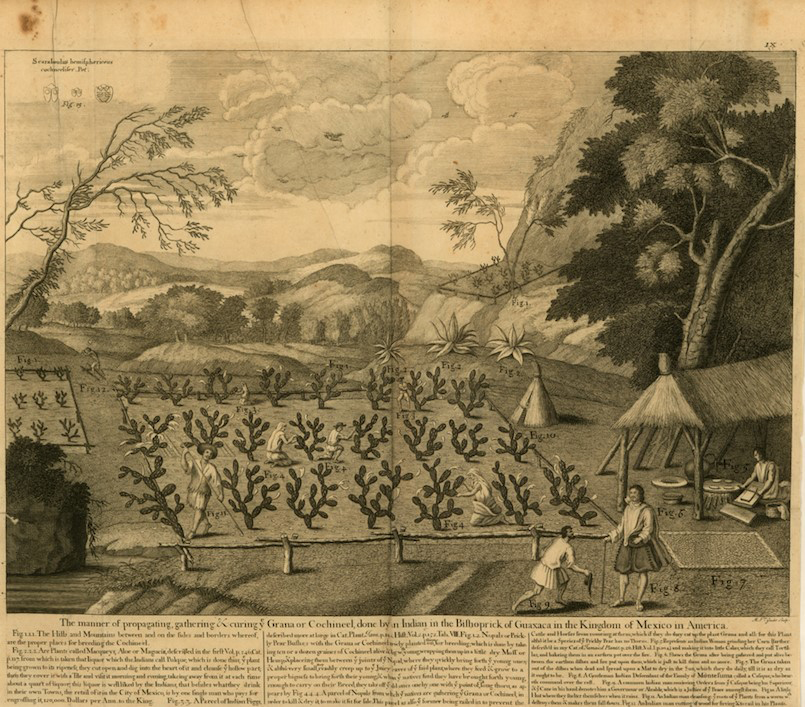Given its tremendous commercial potential, it is unsurprising that other European powers, in particular the British and French monarchies and the Indies trade companies, sought to secure a stake in its production and distribution. In his Voyage to Jamaica, Hans Sloane, founder of the British Museum, dedicates a few lines to ‘this good commodity’. Referencing two of the more popular theories about cochineal, e.g. that it was a worm or a berry (the name grana cochinilla, as the dye is still called in Mexico, is a vestige of this belief ), Sloane identified the plant on which it grew as ‘Opuntia maxima’. This ‘tree’ had spread across the island of Jamaica, brought there from the American mainland by a Spanish priest, but cochineal did not. As Sloane wrote, in Jamaica no one had ever observed ‘that Worm upon any of their Trees’. Privateering, not animal husbandry, was the surer way to acquire the dye in Jamaica.
COCHINEAL OF HANS SLOANE
Hans Sloane, ‘The manner of propagating, gathering & curing ye Grana or Cochineel, done by an Indian in the Bishoprick of Guaxaca in the Kingdom of Mexico in America’, Voyage to Jamaica, vol. 2, plate 9, 1725 (courtesy of John Carter Brown Library).
Miruna Achim
Further reading
- Alzate y Ramírez, J.A. (1991) Memoria sobre la naturaleza, cultivo y beneficio de la grana [1777] (Mexico City: Archivo General de la Nación).
- Butler Greenfield, A. (2005) A Perfect Red: Empire, Espionage, and the Quest for the Color of Desire (New York, NY: HarperCollins Publishers, Inc.).
- von Humboldt, A. (1811) Essai politique sur le Royaume de la Nouvelle Espagne (Paris).
- Moreno de los Arcos, R. (1989) Linneo en México: la controversia sobre el sistema binario sexual (Mexico City: UNAM).
- Museo del Palacio de Bellas Artes (2018) Rojo mexicano: la grana cochinilla en el arte (Mexico City: Secretaria de Cultura).
- Padilla, C., and B. Anderson (2015) A Red Like No Other: How Cochineal Colored the World (New York, NY: Skira Rizzoli).
- Phipps, E. (2010) Cochineal Red: The Art History of a Color (New York, NY: Metropolitan Museum of Art/Yale University Press).





